The City of Lanka in Ramayana; Ramayana in Sri Lanka
What is Ramayana?
Sage Valmiki, considered as the “Adi Kavi” or the first poet is considered as the composer of this epic story in verses in Sankirt, with nearly 24,000 verses – divided into seven books (kandas). The legend says that Valmiki was inspired to write the Ramayana after hearing about Rama’s virtues and life story, that preserves the tale of Rama’s journey, struggles, and the triumph over adversity. The Ramayana has since become one of the most influencial texts in the Hindu culture and has been retold in many languages and with adaptations all across Asia.
Historical background for the Ramayana
Ramayana is a blend of mythology, history, and spiritual symbolism. The reality check if Ramayana is real or not remains as a matter of interpretation and belief and also academic debate too. However, to the millions of Hindu believers, the story of Rama, Ravana, and their epic tale of Ramayana is surely more than just another mythology.
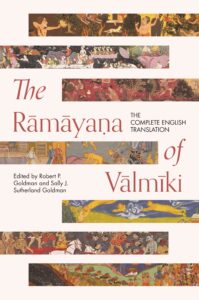
The oral tradition that was passed down through generations and was later put to text by the sage Valmiki in somewhere between the 5th and 4th centuries BCE. That’s 500-400 years before the birth of Jesus Christ.
The oldest manuscripts of the Ramayana date to the 11th Century CE/AD but that only shows that there were physical copies by this time. There are more references to the Ramayana in ancient Indian texts suggesting that the oral existence originated along before written records.
There are many translations available for purchase in printed and also ebooks. The Princeton University edition can be found here.
When did the events in Ramayana actually happen or simply, when did Ramayana occur is a question that we all have in mind. Honestly, there is no definite answer to that but there are two interpretations to this.
- Traditional Hindu Belief:
Many Hindu scholars and texts place the events of the Ramayana in the Treta Yuga, which is said to be the second of the four Yugas or ages in Hindu cosmology. The Treta Yuga is traditionally dated to several thousand years before the current era, potentially as far back as 1.7 million years ago, according to certain Puranic texts. However, these timelines are symbolic and represent cosmic cycles rather than historical dating.
- Theories based on Astronomical references:
Some researchers have attempted to date the Ramayana by analyzing the positions of stars and planets mentioned in the text. These studies suggest possible dates ranging between 5,000 BCE and 7,000 BCE, though these conclusions are speculative and vary widely.
Ramayana and Sri Lanka
Since there’s so many Ramayana Tours in Sri Lanka, listing many places related to the Ramayana, the events that took place, various intepretations, this is more of a trend and hype now with the Sri Lanka Tourism too. There’s so many packages and tours listed by many tour operators about Sri Lanka Ramayana Tours and we thought, let’s break it down and explore what these places really mean, is it worth visiting, what’s the historical story or background to these places in Sri Lanka.
The glorious Hanuma neared the city of Lanka ruled by Ravana, and saw the city which looked like the city of Gods in heaven, decorated by moats filled with lotuses and water-lilies, which was well protected, since the time of Seetha's abduction, by Ravana and by Rakshasas with horrifying voices roaming around, which was surrounded by a golden boundary wall, that beautiful great city consisted of houses equal in height to mountains and which looked like autumnal clouds, with white and elevated main streets, decorated with flags and pennons, with excellent golden hued archways adorned with sculpted rows of vines. He then saw the city of Lanka with beautiful white buildings situated on the top of a mountain like a city located in the sky. He saw that city of Lanka ruled by Ravana the king of Rakshasas, constructed by Visvakarma (architect of Gods), and which looked as though it were floating in the sky.
Chapter 2 // Ramayana by Valmiki
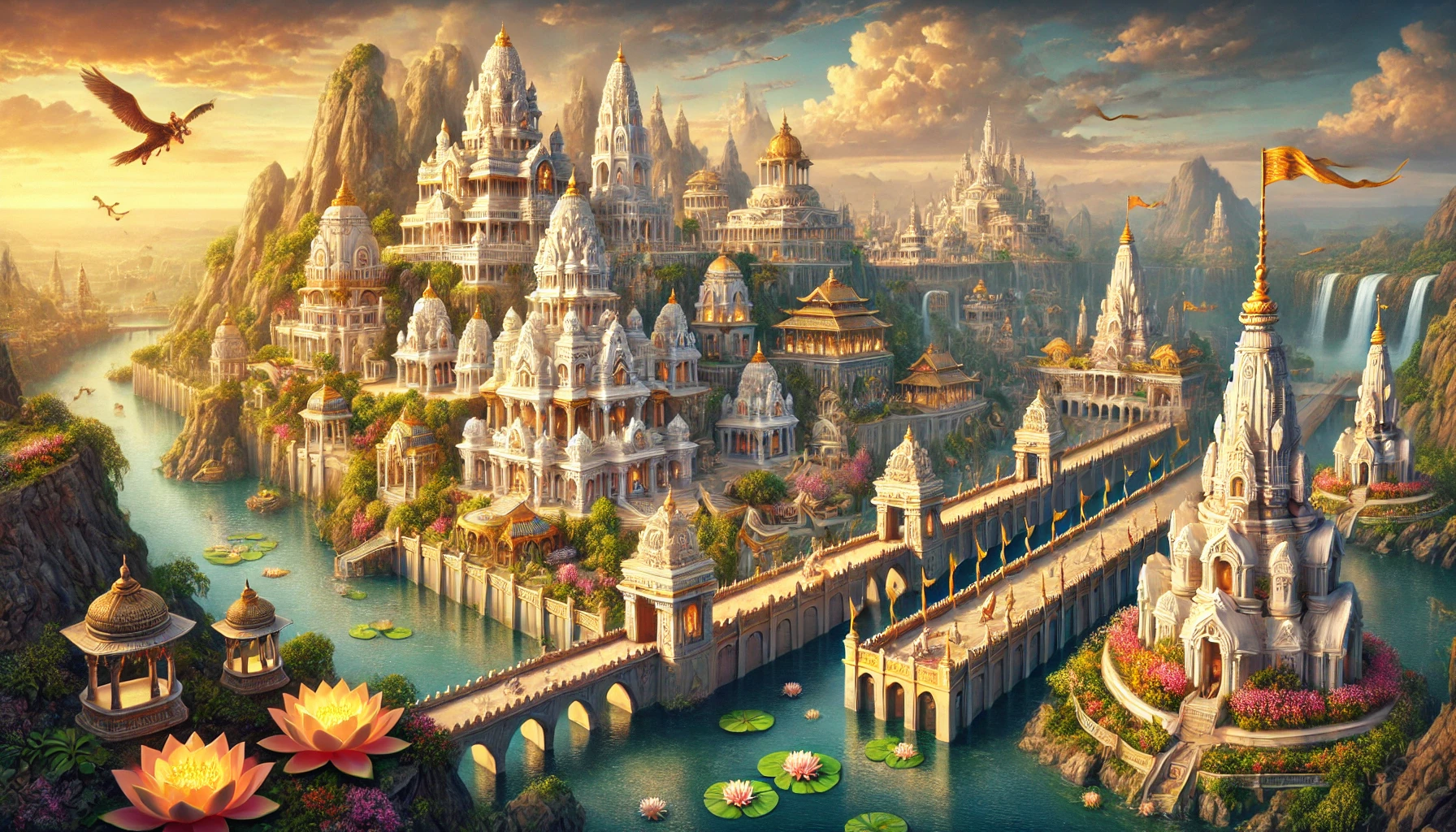
To us in Sri Lanka, even though we are a Sinhala-Buddhist majority country, the concept of King Ravana and the Ramayana is not that new. Even though the Valmiki’s Ramayana shows Ravana as a Evil king of Lanka, or a Raksha King or Devil tribe, for us in Sri Lanka, King Ravana is a Maestro. He is like one demi-god from Sri Lanka and the story of Ramayana is a bit different to what the Hindu text says. More on that later.
Generally there are over 50 locations related to Ramayana in Sri Lanka. That’s a lot given that the City of Lanka is just one-city or Kingdom mentioned in the Ramayana. But the fact that Ramayana also has a Sri Lankan interpretation makes it more interesting and expanded when it comes to finding and making the Ramayana meaningful in the Sri Lankan context.
Ramayana sites in Sri Lanka
Let’s go through 20 famous sites in Sri Lanka, related to the Ramayana – often referenced with events and incidents that illustrated in the Ramayana. If you visit Sri Lanka, these places are very much real to visit, even though the relevance to the Ramayana is often tasked with imagination and belief. Either way, these locations related to Ramayana in Sri Lanka really make the Ramayana a true-like story that could have happened.
01. Rama Setu (Nala Setu) / (Ram Setu) or Adam's Bridge in Mannar
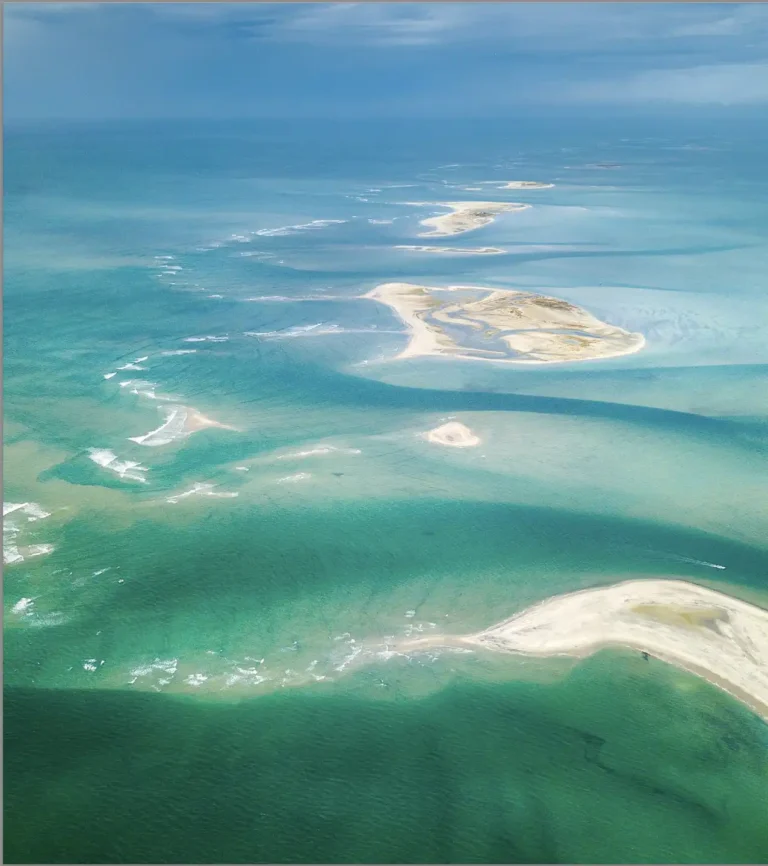
Rama Setu, also known as Adam’s Bridge, is traditionally considered to be the bridge built by Lord Rama and his Vanara (monkey) army to cross over to Lanka in the Ramayana. This bridge is a chain of natural limestone shoals that connects Rameswaram in India to Mannar Island in Sri Lanka. The Yuddha Kanda (Book of War) in the Ramayana narrates the construction of this bridge, also known as Nala Setu after Nala, the engineer who helped build it.
References to Rama Setu from Ramayana
(Yuddha Kanda, Chapter 22):
“Then Nala, the son of Vishwakarma, the divine architect, said, ‘I am the son of Vishwakarma, capable of constructing a bridge across the ocean. Rama, along with the Vanara army, began to collect trees and stones to build a bridge over the sea. They started building that bridge across the ocean, which was a hundred yojanas long and ten yojanas wide, stretching towards the island of Lanka.”
Yuddha Kanda, Chapter 22, Verse 76):
“That mighty bridge, which had been constructed by the Vanaras over the ocean, shone brightly like a series of clouds at sunset. It was strong and able to support the entire army, appearing like a garland stretched across the sea.”
(Yuddha Kanda, Chapter 23):
“With the bridge completed, Rama, Lakshmana, and the Vanara army crossed the vast ocean. As they marched, they saw the golden city of Lanka in the distance, ready for the final battle.”
02. Kanniya Hot Water Springs in Trincomalee
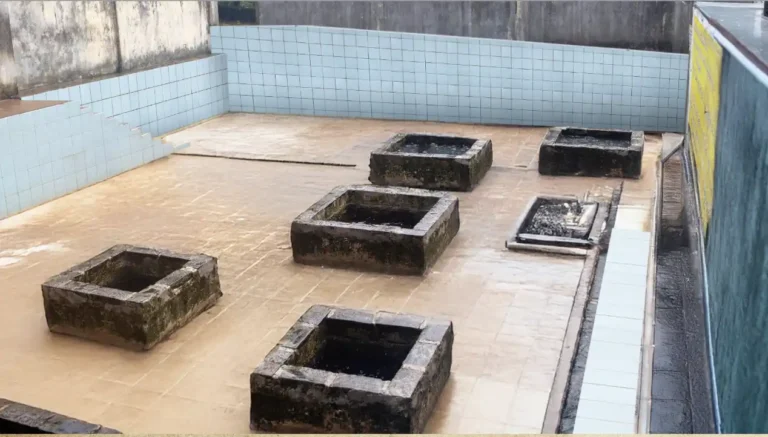
The Kanniya Hot Water Springs in Trincomalee, Sri Lanka, are linked to the Ramayana through the story of Ravana and his grief over the death of his mother.
According to popular folklore in Sri Lanka, after Ravana’s mother passed away, Ravana wished to perform last rites and rituals for her soul. However, he faced a shortage of fresh water in the area to conduct these rites. Driven by grief, Ravana struck the ground with his sword, creating several hot water springs to perform the rituals. This act of creating the springs is attributed to his intense sorrow and devotion to his mother.
Local beliefs hold that these seven springs in Kanniya, with different temperatures, are manifestations of Ravana’s sorrow and power. Devotees often visit the springs as a tribute to Ravana’s deep respect and love for his mother, and it’s a significant site for both Hindus and Buddhists in the region.
03. Thirukoneswaram Kovil in Trincomalee
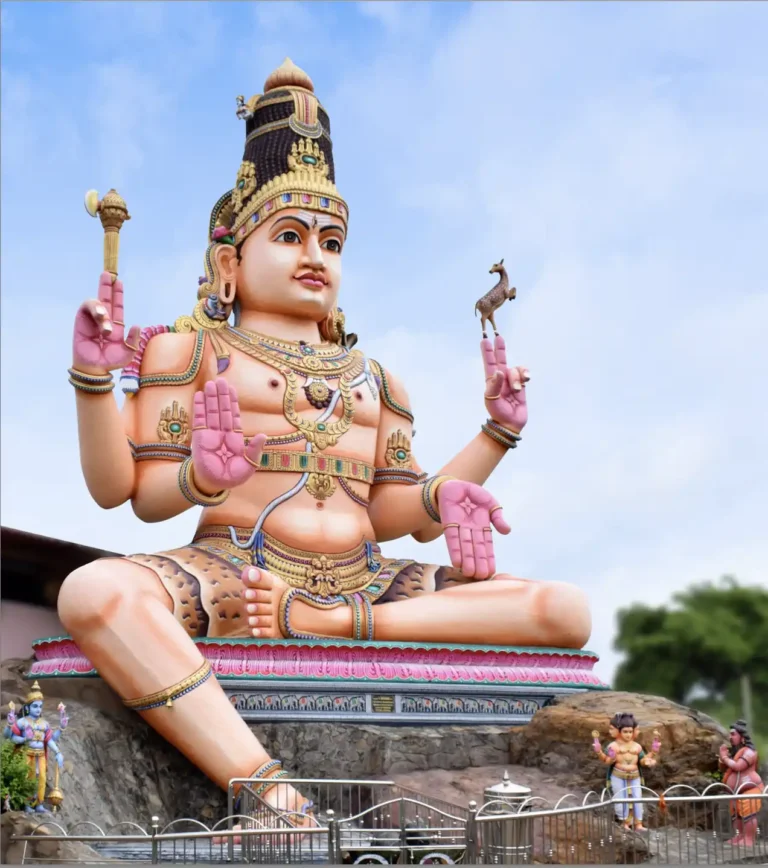
Thirukoneswaram Kovil in Trincomalee, also known as the Temple of a Thousand Pillars, is one of the most revered Hindu temples in Sri Lanka and holds a prominent place in Ramayana legend. The temple is dedicated to Lord Shiva and is believed to be linked to Ravana and his devotion to Shiva. Thirukoneswaram is often referred to as the Dakshina Kailasa (Southern Kailash) and is revered for its spiritual energy and significance in Shaivism.
According to local lore, Ravana was a devout follower of Lord Shiva, and it’s said that he visited the Thirukoneswaram temple to offer prayers and seek blessings. The Yuddha Kanda of the Ramayana speaks of Ravana’s worship of Shiva, but it doesn’t specify the location. In Sri Lankan tradition, Thirukoneswaram is considered one of the places where Ravana’s deep devotion to Shiva was evident.
It is believed that Ravana installed a lingam (a representation of Shiva) at Thirukoneswaram as part of his devotion. According to Sri Lankan lore, he would come here to perform rituals and pray for strength, which was part of his effort to gain divine protection and powers. Some legends even suggest that he meditated here, hoping to obtain boons from Shiva to fortify his strength for battles.
Another legend holds that after defeating Ravana, Rama himself visited Thirukoneswaram to atone for the sin of killing Ravana, who, despite his wrongdoings, was a Brahmin and a devotee of Shiva. This belief aligns with the tradition that Rama traveled to several Shiva temples to cleanse himself of the “Brahmahatya dosha” (the sin of killing a Brahmin).
04. Sigiriya Rock Fortress in Sigiriya
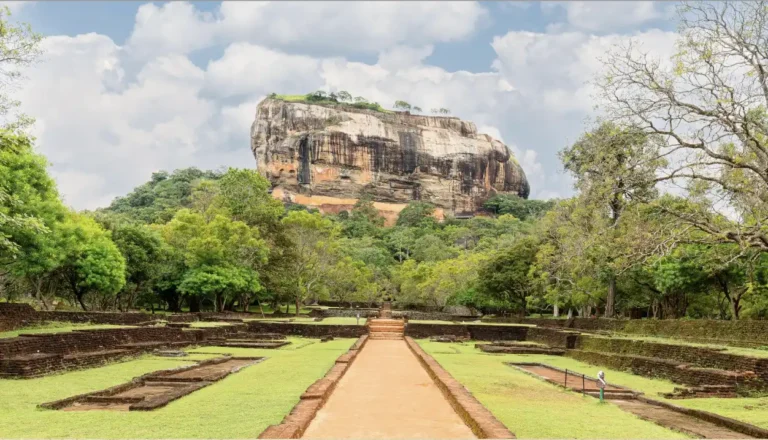
Sigiriya, one of Sri Lanka’s most iconic landmarks, is often associated with Ramayana legends, particularly in connection with King Ravana. While Sigiriya is not explicitly mentioned in Valmiki’s Ramayana, Sri Lankan folklore and local tradition have woven Sigiriya into the story of Ravana, making it a site of great interest in the extended Ramayana mythology in Sri Lanka.
Some versions of the Ramayana legend in Sri Lanka suggest that Sigiriya, with its towering rock fortress and intricate palace complex, was one of Ravana’s palaces or strongholds. According to this lore, Ravana built the fortress on top of the 200-meter-high rock for strategic purposes, as its elevation and fortifications would have provided a secure, impregnable residence.
The complex design of Sigiriya, with its frescoes, gardens, water systems, and rock carvings, is attributed by some to Ravana’s advanced architectural knowledge and sophistication, though historically, Sigiriya was constructed during the reign of King Kashyapa in the 5th century CE.
Another interpretation in Sri Lankan folklore connects Sigiriya to the Ramayana as a possible location where Sita was held captive before she was moved to the Ashoka Vatika (believed to be near Nuwara Eliya). Some suggest that the fortress’s strategic height made it an ideal location to guard Sita securely. While this is a speculative link, the lore adds an intriguing dimension to Sigiriya’s cultural significance, viewing the site as part of Ravana’s attempt to keep Sita hidden from Hanuman and Rama’s forces.
In addition to its reputation as a palace, Sigiriya’s geographical advantages make it plausible as a fortress in the Ramayana narrative. The surrounding moat, water gardens, and fresco-covered walls align with the idea of a fortified palace city, characteristics that could fit Ravana’s preference for secure and grand residences, as inferred from descriptions of his other palaces in the Ramayana.
05. Dunuwila Lake in Matale
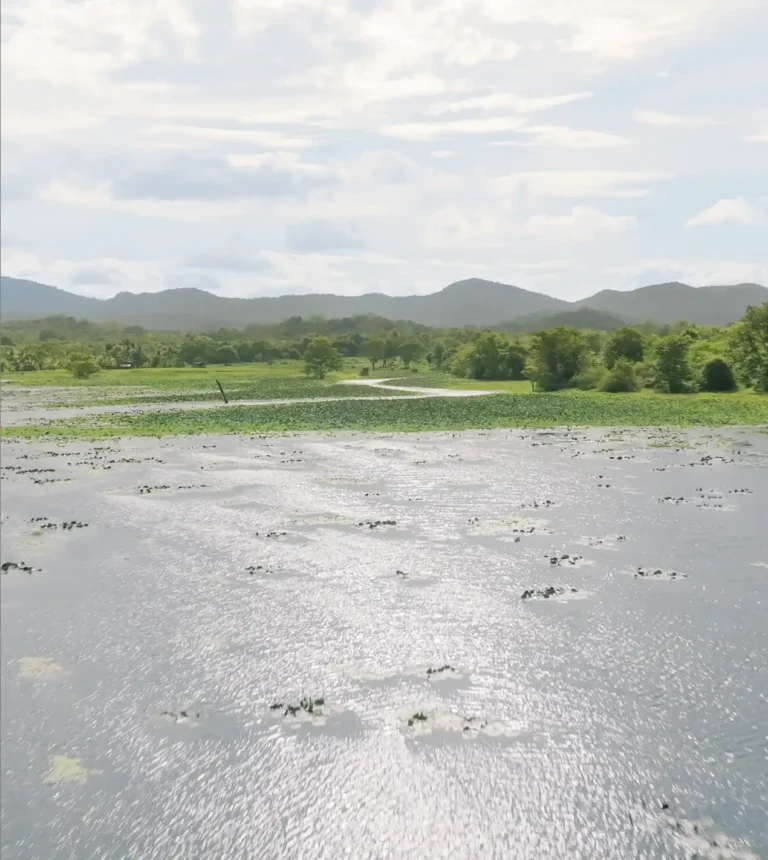
Dunuwila Lake, located in the Matale District of Sri Lanka, holds a special place in Ramayana legend as the spot where Lord Rama is believed to have aimed his final arrow to kill Ravana. This lake is not mentioned in the original Valmiki Ramayana, but local Sri Lankan folklore and extended Ramayana stories link it to the climactic battle between Rama and Ravana.
The name “Dunuwila” itself is derived from “dunu” (arrow) and “wila” (lake or water), linking it directly to the legend of Rama’s final arrow.
According to Sri Lankan tradition, Dunuwila (meaning “where the arrow was shot”) is the place where Lord Rama took his final, decisive shot to end the battle against Ravana. It is believed that Lord Rama used this location as a strategic vantage point to observe Ravana’s position, ultimately taking aim and killing him with a powerful arrow.
Local lore states that Dunuwila Lake was part of the battlefield landscape in the region where the epic war between Rama and Ravana took place. The area around Dunuwila is thought to have provided an ideal location for Rama to take his shot, as it gave him a clear view across the terrain. In some interpretations, it is said that Ravana had grown immensely powerful and needed a fatal strike, which Rama delivered from this exact spot with the help of divine weapons.
06. Chariot Path in Pussellawa
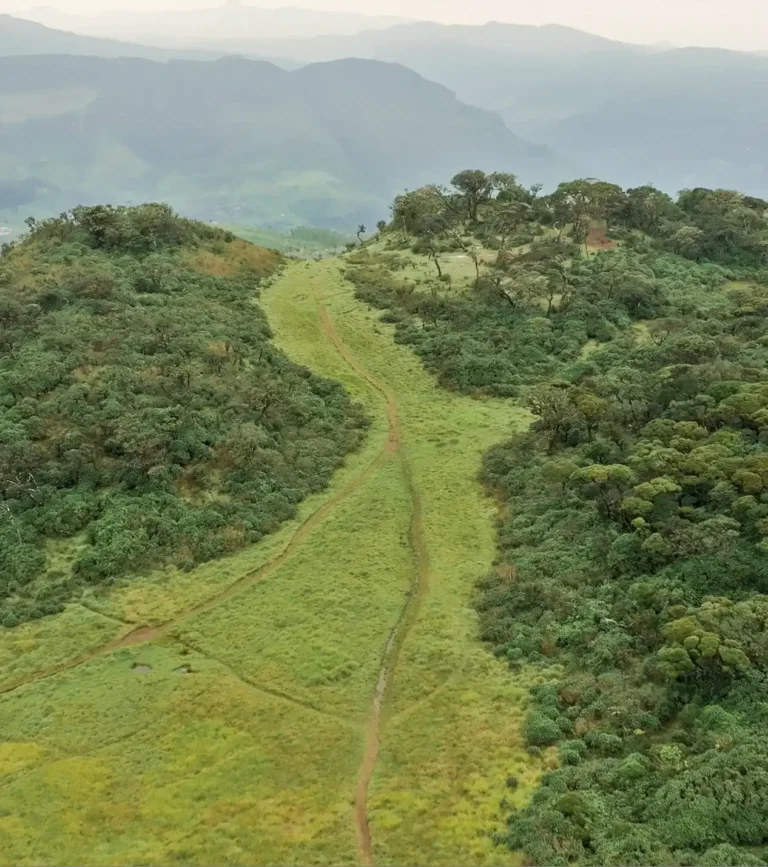
The Chariot Path in Pussellawa, located in Sri Lanka’s central highlands, is connected to Ramayana folklore as the route taken by Ravana’s chariot when he transported Sita to different locations after abducting her. This site is not explicitly mentioned in Valmiki’s Ramayana, but Sri Lankan tradition and extended Ramayana narratives consider it a significant point in the story of Sita’s captivity.
According to local legend, the grassy plains in Pussellawa, known as the “Chariot Path,” are believed to show the route that Ravana’s chariot took after he kidnapped Sita and brought her to Lanka. This route is said to have been used by Ravana to move Sita across the mountainous terrain, eventually taking her to the Ashoka Vatika (believed to be near present-day Sita Eliya).
It is said that the marks left by Ravana’s chariot are still visible as deep impressions on the grassy land, reinforcing the myth that Ravana’s chariot moved over these plains. These impressions appear as parallel tracks, lending an aura of mystery and intrigue to the place.
Devotees and visitors come to the Chariot Path in Pussellawa to experience the legendary setting, seeing it as a place where Sita was moved along by Ravana, reinforcing the connection between Sri Lanka’s natural landscape and the Ramayana narrative.
07. Sita Kotuwa in Hasalaka, Kandy
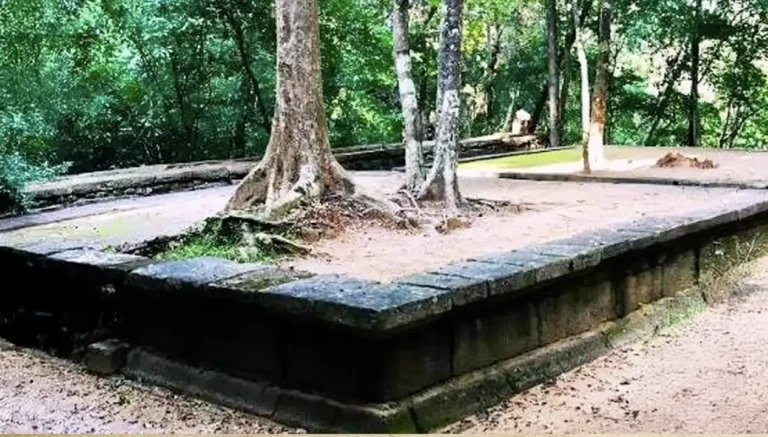
Sita Kotuwa in Hasalaka, Sri Lanka, is a location associated with Ramayana legends as one of the places where Sita was allegedly kept during her captivity in Lanka. The name “Sita Kotuwa” translates to “Sita’s Fortress,” and it is believed to be one of the first places where Ravana held Sita before moving her to the Ashoka Vatika (now linked to Sita Eliya near Nuwara Eliya).
Some archaeological remains, such as foundations of buildings, walls, and ponds, are visible in the area, leading locals to believe this was part of Ravana’s kingdom. These remains add to the legend, suggesting that Sita Kotuwa may have been a royal garden or a fort, fitting with the Ramayana folklore surrounding Ravana’s grandeur and architectural achievements.
08. Sri Bhaktha Hanuman Temple in Ramboda
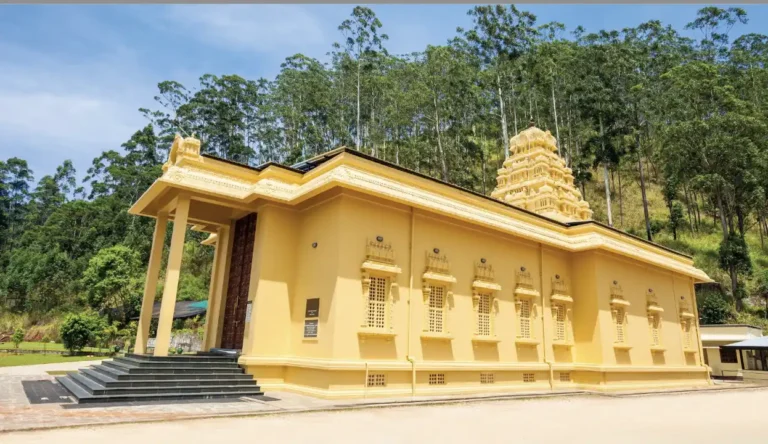
According to the Ramayana, after crossing the ocean to Lanka, Hanuman searched tirelessly for Sita. The Ramboda area, where the temple is located, is believed by some Sri Lankan traditions to be one of the places where Hanuman rested or paused during his search.
The Shri Bhakta Hanuman Temple was built by the Chinmaya Mission of Sri Lanka to honor Hanuman’s devotion, strength, and service to Lord Rama. The temple is set against a scenic backdrop, with views of the hills and valleys of Ramboda, capturing the natural beauty of the area, which is associated with Hanuman’s journeys in Ramayana lore.
The temple is a significant stop on the Sri Lankan Ramayana trail, attracting devotees and visitors who wish to honor Hanuman’s journey and his crucial role in the epic.
09. Ramboda Falls in Ramboda
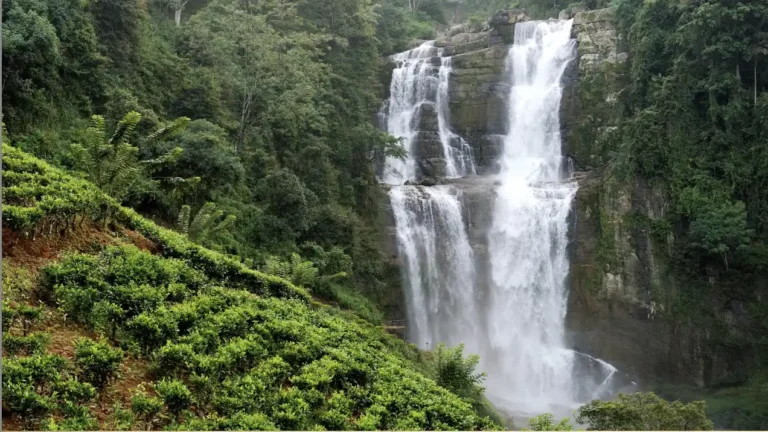
This famous and picturesque waterfall in Ramboda, near the Sri Bhaktha Hanuman Temple is a famous site for many following the Ramayana trail in Sri Lanka.
According to Ramayana-inspired Sri Lankan folklore, Ramboda Falls and the surrounding area are thought to be part of the path Hanuman took while searching for Sita after leaping across the ocean to reach Lanka. The falls and the rugged mountainous terrain of Ramboda align with descriptions in the Sundara Kanda, where Hanuman is described moving through dense forests, mountains, rivers, and scenic landscapes during his search.
10. Sita Amman Kovil
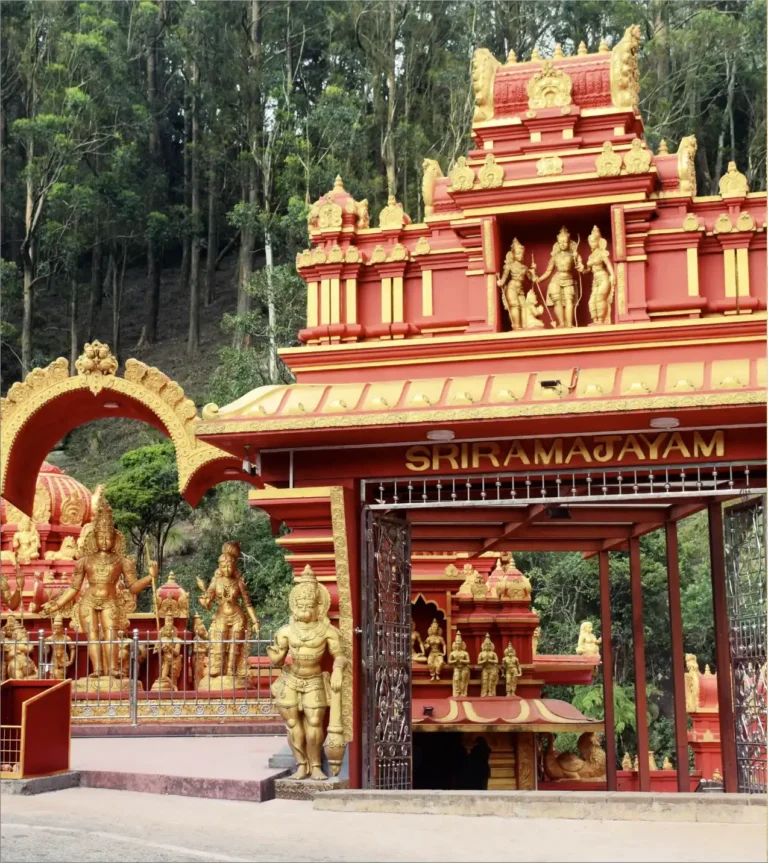
Sita Amman Kovil in Sita Eliya, near Nuwara Eliya in Sri Lanka, is a significant Ramayana-related site believed to be the location of Ashoka Vatika (Ashokavana), the grove where Ravana held Sita captive. This temple is dedicated to Sita, and it’s revered as one of the places in Sri Lanka most closely associated with her story in the Ramayana. The temple’s location and surroundings align with the descriptions of Sita’s captivity in Valmiki’s text, though the exact site is based on Sri Lankan tradition and not specified in the original Sanskrit epic.
In the Ramayana, Ravana brings Sita to Lanka after abducting her and places her in a secluded grove called Ashoka Vatika. According to Sundara Kanda in the Ramayana, this grove is described as being filled with ashoka trees, beautiful flowers, and was a lush, enclosed garden. It was here that Sita resisted Ravana’s advances, remaining steadfast in her devotion to Rama.
According to the Ramayana, Hanuman eventually finds Sita in the Ashoka Vatika. The Sundara Kanda describes how Hanuman sees Sita surrounded by ashoka trees, guarded by Ravana’s demonesses. He presents her with Rama’s ring as a symbol of hope and reassurance, marking the first contact between Sita and Rama’s allies since her abduction.
There are also nearby rocks with impressions that locals believe are the footprints of Hanuman from when he came to visit Sita, as per the folklore surrounding the temple.
11. Divurumpola Temple in Welimada
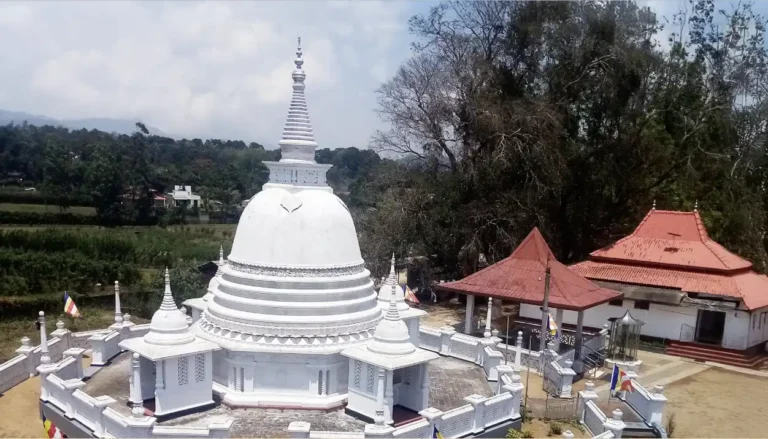
Divurumpola Temple, located near Welimada in Sri Lanka, is another important site associated with the Ramayana. According to Sri Lankan tradition, this temple marks the location where Sita underwent the “Agni Pariksha” or the trial by fire to prove her purity after being rescued from Ravana. While Valmiki’s Ramayana does not name Divurumpola as the location for the Agni Pariksha, Sri Lankan folklore and Ramayana devotees revere it as the place where this significant event is believed to have taken place.
O Sita! You have been won back by me. I have done my duty as a Kshatriya. There is no anger in my heart against you, nor do I blame you. Ravana abducted you by force, and you were held captive in his kingdom. I have redeemed my honor and that of my dynasty, but you must now prove your purity.
Rama to Sita // Yuddha Kanda - Chapter 118
Hearing Rama’s words, Sita, with a composed mind, addressed him, ‘If my heart has not wandered from you, if my thoughts have been pure, may Agni, the god of fire, protect me.’ With these words, Sita entered the blazing pyre. Immediately, Agni, the fire god, arose from the flames, carrying Sita in his arms, unharmed, and presented her to Rama, declaring her purity and chastity. Agni said, ‘O Rama, Sita is pure and innocent. She has not been touched by Ravana and is sinless.’
Sita and her Agni Pariksha
12. Hakgala Botanical Garden in Nuwara Eliya
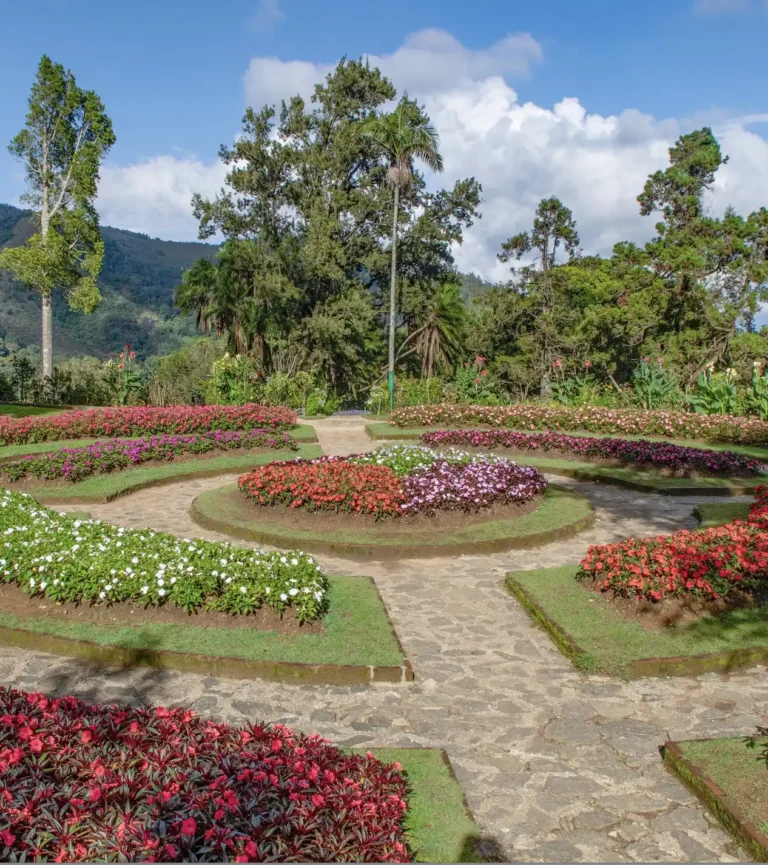
Hakgala Botanical Gardens near Nuwara Eliya in Sri Lanka is connected to Ramayana legend as a site believed to be part of the Ashoka Vatika or Ashokavana, the grove where Sita was kept captive by Ravana. Although Valmiki’s Ramayana does not mention “Hakgala” specifically, Sri Lankan folklore and the extended Ramayana tradition in Sri Lanka hold that this area aligns with the descriptions of Ashoka Vatika.
In the Ramayana, Ravana brings Sita to a secluded garden called Ashoka Vatika, described as a lush grove filled with beautiful ashoka trees, fragrant flowers, and dense foliage. Sita’s residence in Ashoka Vatika is central to the story, as it’s here she resists Ravana’s advances, awaits Rama’s rescue, and is eventually visited by Hanuman.
The Ramayana describes the Ashoka Vatika as having a variety of trees, flowers, and medicinal plants. Hakgala Botanical Gardens, one of the highest-altitude gardens in Sri Lanka, contains a rich variety of flora, including ashoka trees, roses, and exotic plants that could represent the type of vegetation in Ashoka Vatika.
It is said that Ravana chose this garden due to its beauty and isolation, ensuring Sita would be guarded and hidden. The area’s natural beauty and diversity of plants support its association with the garden described in the epic.
13. Thotupola Kanda in Nuwara Eliya
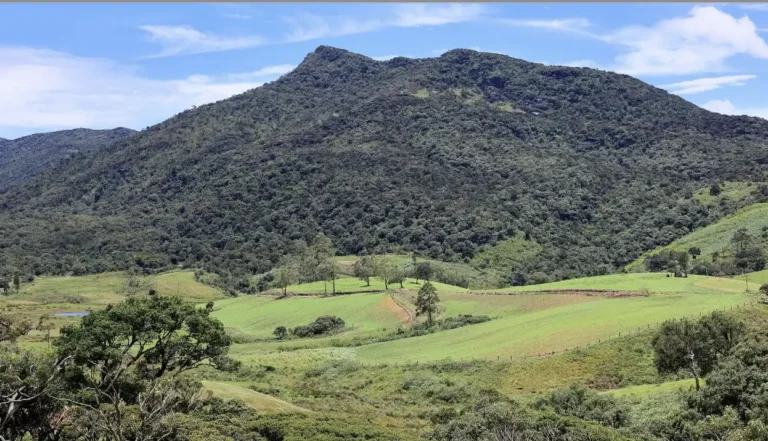
Thotupola Kanda, the third-highest mountain in Sri Lanka, located in Horton Plains National Park, is tied to Ramayana legend as a potential landing site of Ravana’s Pushpaka Vimana (his flying chariot). The mountain’s name, “Thotupola,” which translates to “Landing Place” in Sinhala, adds to the belief that it was a significant location related to Ravana’s travels in the Ramayana.
The remote and scenic setting of Thotupola Kanda adds a mystical allure, allowing visitors to imagine the presence of Ravana’s powerful Vimana descending onto the high plains.
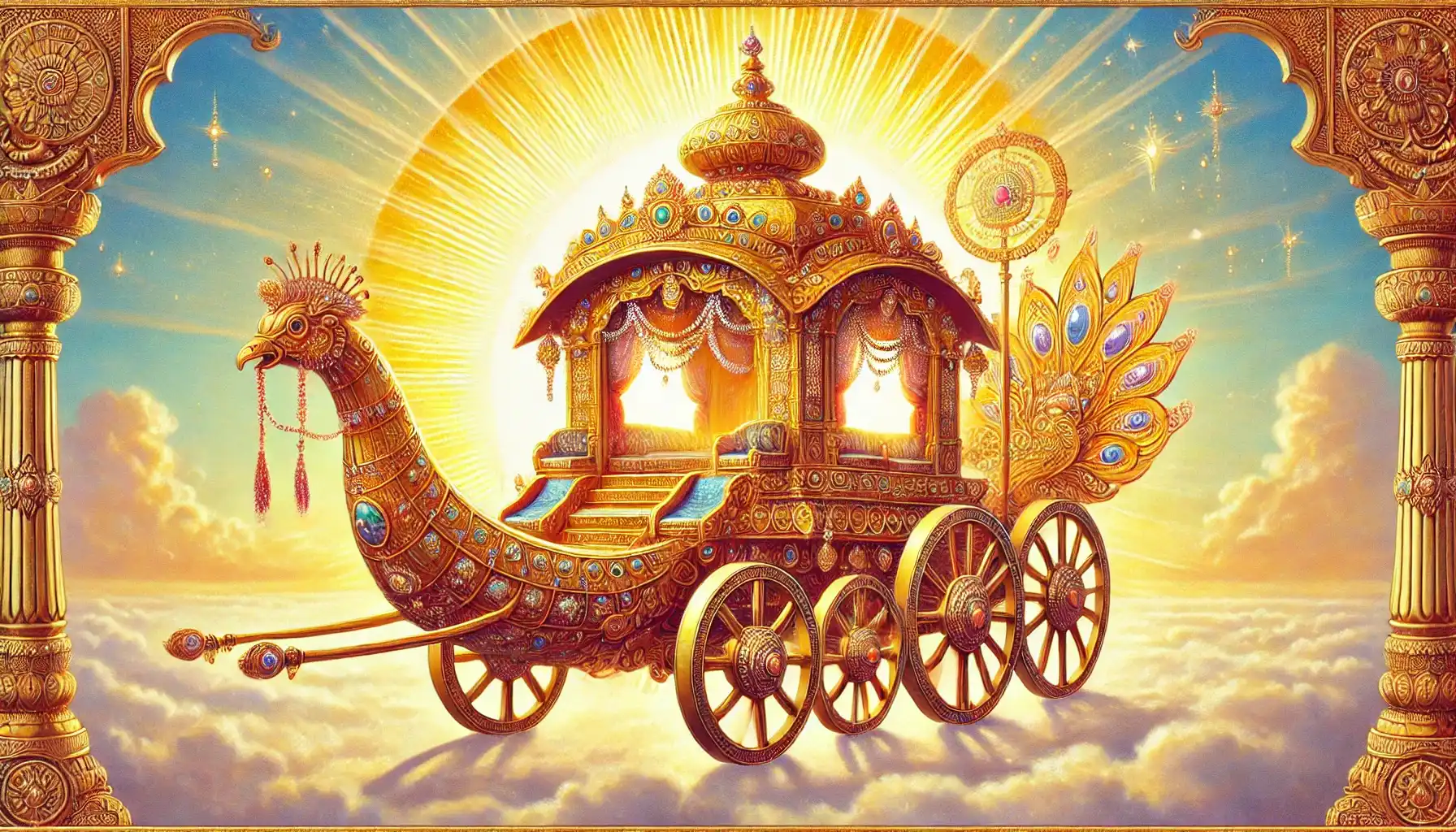
14. Ravana Cave in Ella
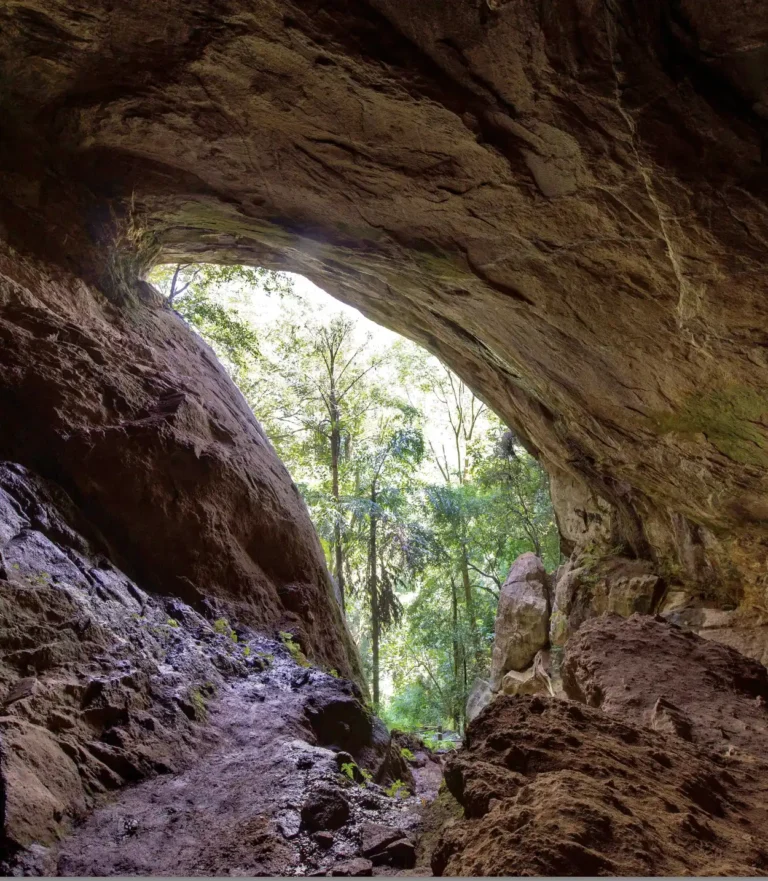
King Ravana has used these caves to keep Princess Sita in captivity. Just 2 km from the Ella town, at the base of the cliff, the Ravana Cave is one interesting place.
According to Ramayana lore in Sri Lanka, Ravana constructed a complex system of caves and tunnels to move quickly and discreetly through his kingdom. These tunnels are believed to connect various strategic points across Sri Lanka, allowing Ravana to navigate the mountainous terrain and protect his territory.
Ravana Cave has become a popular stop on Sri Lanka’s Ramayana trail, attracting both pilgrims and tourists interested in the island’s Ramayana sites. The cave is considered a sacred place by many, embodying the spirit of the Ramayana legends that continue to enrich Sri Lankan culture.
Today, visitors to Ravana Cave can explore the narrow pathways and marvel at the natural rock formations. The cave is part of a larger landscape that feels hidden and protected, reinforcing the legend that Ravana used such places for strategic purposes.
15. Nil Diya Pokuna in Ella
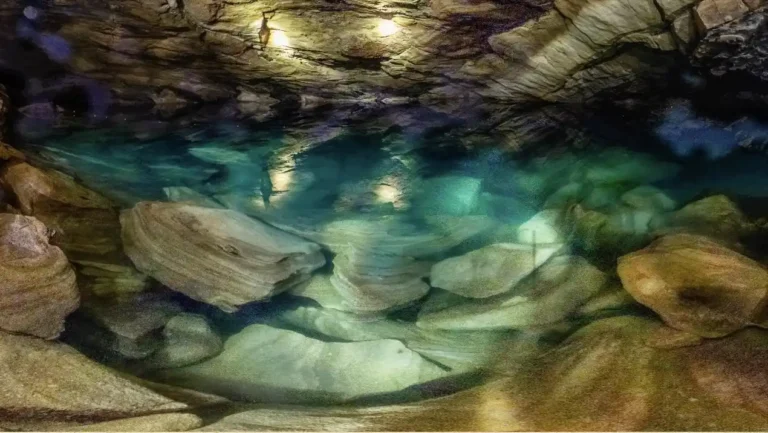
While Nil Diya Pokuna is not directly linked to Sita’s captivity in Valmiki’s text, Sri Lankan legend associates such underground sites with Ravana’s efforts to keep Sita hidden from Rama. Some believe that Nil Diya Pokuna may have been used by Ravana as part of the complex network of hideouts where he could secretly move or access water.
For those following the Ramayana trail, Nil Diya Pokuna has become a place of intrigue, reflecting the ingenuity and mystique associated with Ravana. Visitors see it as a hidden marvel of nature, a place that connects the landscape to the larger-than-life persona of Ravana as portrayed in Sri Lankan lore.
16. Ruhunu Maha Kataragama Devalaya in Kataragama
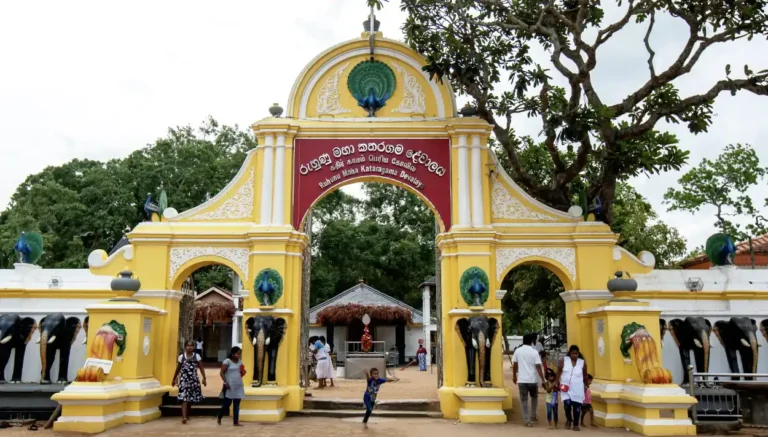
According to tradition, the Kataragama Temple is dedicated to Lord Skanda (also known as Murugan or Kartikeya), the Hindu god of war and the son of Shiva and Parvati. In certain extensions of Ramayana folklore, it is believed that Lord Skanda helped Rama in his battle against Ravana by lending divine support and blessings.
While this connection is not in Valmiki’s original Ramayana, Sri Lankan tradition associates Lord Skanda with protecting Rama and his forces, as he is a powerful deity worshipped for courage, strength, and victory in battle.
17. Ussangoda National Park in Ambalantota
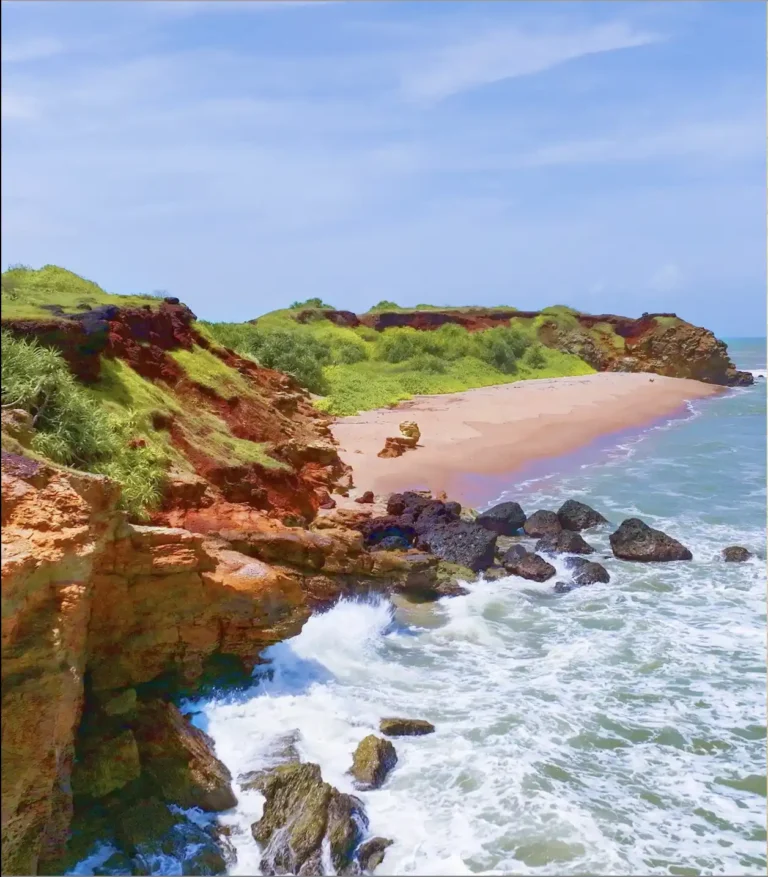
Hanuma, with his blazing tail comes out and flits over the horses in Lanka, making up his mind to set fire to the city of Lanka which is the only work let for him to do. Hanuma burns the entire city, barring the abode of Vibhishana. All the demons were frightened o seeing the blazing fire, consuming their city with its trees, houses and a host of living beings. Surprised to see the city burning, the celestials and musicians (Gandharvas) gain a great delight. –
Ramayana – Sundara Kanda – Chapter 54
The account of Hanuman setting Lanka on fire is found in Valmiki’s Ramayana in the Sundara Kanda, specifically in Chapters 53 and 54. This part of the epic details Hanuman’s actions after meeting Sita in the Ashoka Vatika, where he decides to showcase his power to intimidate Ravana and inspire fear among the rakshasas (demons) of Lanka.
Although Ussangoda is not directly mentioned in the original text, folklore suggests that Hanuman’s fire led to the red, barren soil seen in Ussangoda today, which is devoid of much vegetation and has a scorched appearance. This unique landscape, with red soil and sparse plant life, is attributed to the divine fire that Hanuman supposedly unleashed on Ravana’s lands.
18. Rumassala in Galle
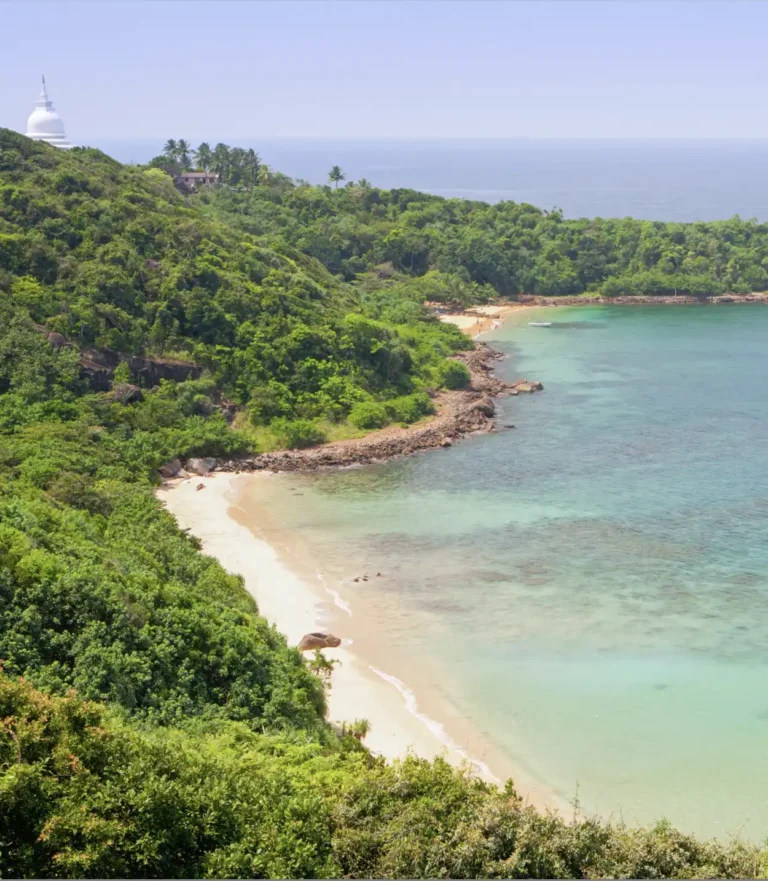
In the Yuddha Kanda of the Ramayana, during the battle in Lanka, Lakshmana is gravely injured, and Rama’s army needs a rare medicinal herb called Sanjeevani to revive him. Rama sends Hanuman to the Himalayas to retrieve the herb.
Upon reaching the mountains, Hanuman is unable to identify the specific herb and, in his devotion and haste, lifts an entire mountain (Dronagiri) and carries it back to Lanka to ensure he has the Sanjeevani along with other life-saving herbs.
Even the mountain of Ritigala closer to Anuradhapura is also referred as another place where a piece fell. Another location for Sanjeevani – the elixir of Life.
“You can see there, Mrita Sanjivani (capable of restoring the dead to life), Vishalyakarani (capable of extracting weapons and healing all wounds inflicted by weapons), Suvarnakarani (restoring the body to its original complexion) and Sandhani, the great herb (capable of joining severed limbs or fractured bone).”
“O Hanuma! Bring all those herbs quickly. O son of wind-god! Bring succour to the monkeys, by injecting lives into them.”
19. Kelaniya Temple in Kelaniya

“In the presence of the Vanaras, Rakshasas, and all the allies, Rama anointed Vibhishana as the ruler of Lanka, entrusting him with the duty of leading his people with virtue and wisdom.”
Yuddha Kanda – Chapter 113
“Vibhishana, the new lord of Lanka, received Rama’s blessings with gratitude and promised to govern justly, in accordance with the principles of righteousness, as guided by his lord and ally, Rama.”
Ramayana
In Sri Lankan tradition, Kelaniya, a suburb of Colombo, is believed to be the place where Vibhishana’s coronation took place and where he eventually ruled as king. According to folklore, Vibhishana is honored as a benevolent ruler who maintained peace and justice in Lanka. The Kelaniya Raja Maha Vihara temple is dedicated in part to Vibhishana, and he is revered as a deity and a guardian of Sri Lanka. The Devayala within the Temple premises is a solid proof of this event. Even the rock-art with Vibhishana’s coronation is depicted at Kelaniya Temple.
20. Manavari Temple in Chilaw
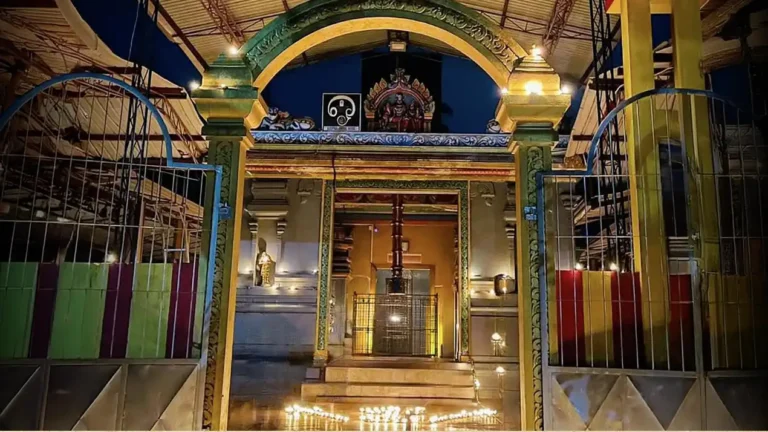
Manavari Temple near Chilaw, Sri Lanka, according to local Ramayana tradition, Lord Rama installed a Shiva Lingam at this temple, known as the Ramalingam, after his victory over Ravana. This lingam was created as part of Rama’s atonement for the sin of killing Ravana, a Brahmin and a devout follower of Lord Shiva.
This Ramalingam at Manavari Temple is significant because it is believed to be one of only two lingams in the world named after Lord Rama, with the other one being at the Rameswaram Temple in India. Devotees on the Ramayana Trail, which follows Rama’s journey and significant events in Sri Lanka, see this temple as a key site for understanding the reverence and acts of devotion Rama performed.
The quest of Ramayana does not end here...
There are more locations such as Lakegala, Munneswaram Temple in Chilaw, Isthripura caves in Welimada, Ritigala in Anuradhapura, Yudhaganawa in Mahiyanganaya, and a few more places also add more context and background to the Ramayana and the story of City of Lanka.
For anyone planning a holiday to Sri Lanka and interested in guided tours, connect with us – where we can arrange for a more detailed tour for you with visits and places so you can enjoy the Ramayana Trail in Sri Lanka as well.
